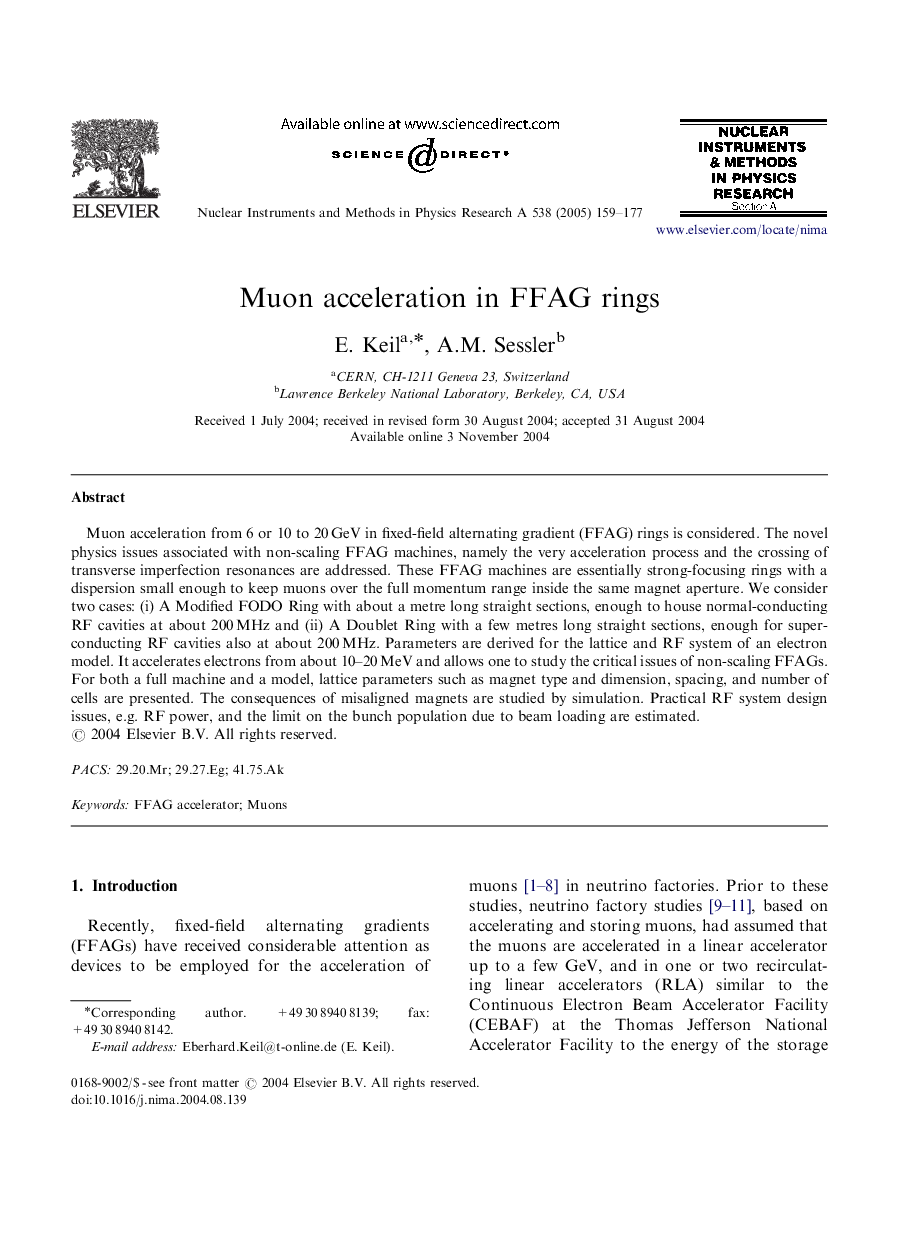| Article ID | Journal | Published Year | Pages | File Type |
|---|---|---|---|---|
| 9845774 | Nuclear Instruments and Methods in Physics Research Section A: Accelerators, Spectrometers, Detectors and Associated Equipment | 2005 | 19 Pages |
Abstract
Muon acceleration from 6 or 10 to 20Â GeV in fixed-field alternating gradient (FFAG) rings is considered. The novel physics issues associated with non-scaling FFAG machines, namely the very acceleration process and the crossing of transverse imperfection resonances are addressed. These FFAG machines are essentially strong-focusing rings with a dispersion small enough to keep muons over the full momentum range inside the same magnet aperture. We consider two cases: (i) A Modified FODO Ring with about a metre long straight sections, enough to house normal-conducting RF cavities at about 200Â MHz and (ii) A Doublet Ring with a few metres long straight sections, enough for super-conducting RF cavities also at about 200Â MHz. Parameters are derived for the lattice and RF system of an electron model. It accelerates electrons from about 10-20Â MeV and allows one to study the critical issues of non-scaling FFAGs. For both a full machine and a model, lattice parameters such as magnet type and dimension, spacing, and number of cells are presented. The consequences of misaligned magnets are studied by simulation. Practical RF system design issues, e.g. RF power, and the limit on the bunch population due to beam loading are estimated.
Related Topics
Physical Sciences and Engineering
Physics and Astronomy
Instrumentation
Authors
E. Keil, A.M. Sessler,
